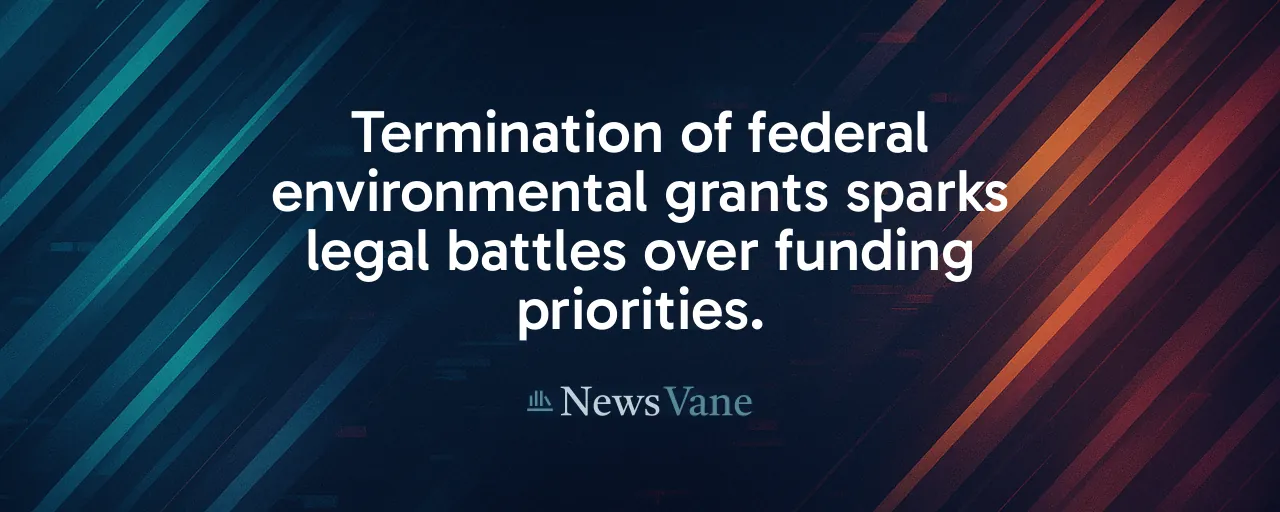A Sudden Freeze on Community Lifelines
On July 7, 2025, California's Attorney General Rob Bonta announced a 20-state coalition backing a lawsuit against the U.S. Environmental Protection Agency. The agency's decision to terminate $2.4 billion in Environmental and Climate Justice Block Grants, authorized by Congress in 2022, has left communities reeling. These funds, meant to tackle pollution and boost public health, were a lifeline for neighborhoods long burdened by environmental harm. Now, their abrupt halt has sparked a fierce debate over federal priorities and local needs.
The grants, part of the Inflation Reduction Act, aimed to empower communities to address air and water pollution, improve infrastructure, and build resilience against climate challenges. Over 380 projects nationwide, from lead-pipe removal to air-quality monitoring, were set to transform lives. In California alone, 40 grantees lost $301 million, stalling efforts to protect vulnerable residents. The coalition's lawsuit argues the EPA's action defies Congress's clear intent, and the issue highlights broader implications beyond legal disputes.
At stake are the health and economic futures of communities often overlooked. The termination affects urban centers, rural areas, tribal lands, and small towns. This concern extends beyond a niche issue, raising fundamental questions about whether federal funds can deliver on promises to improve lives. The clash between executive decisions and congressional mandates demands a closer look at how to balance accountability with urgent community needs.
Why the Grants Mattered
The Environmental and Climate Justice Block Grant program was designed to address stark disparities. Research shows that low-income neighborhoods and communities of color often face higher pollution levels, leading to elevated rates of asthma, cancer, and heat-related illnesses. Peer-reviewed studies estimate that every dollar spent on such projects yields $3 to $5 in public-health savings, particularly in high-exposure areas. These grants were set to fund practical solutions, like cleaner water systems and urban green spaces.
Beyond health, the economic ripple effects were significant. The canceled grants were projected to create over 5,000 jobs, especially in construction and clean-energy sectors. Local governments, nonprofits, and tribes had already begun planning, hiring staff, and securing contractors. The sudden freeze halted projects, disrupted livelihoods, and eroded trust in federal commitments. Rural districts, many in politically diverse regions, also lost funds for critical water infrastructure upgrades.
Concerns about the program's execution persist. Audits have flagged administrative weaknesses among smaller grantees, raising questions about oversight. Some argue the grants' broad scope risked inefficiencies or favoritism in how funds were awarded. These critiques highlight a core tension: how to ensure taxpayer money delivers measurable results while addressing urgent community needs.
The Legal and Fiscal Tug-of-War
The lawsuit, supported by Bonta's coalition, rests on a clear argument: the EPA's termination violates the Inflation Reduction Act and the Administrative Procedure Act. Legal scholars point to the Impoundment Control Act, which limits the executive branch's ability to block congressionally mandated funds. Federal courts have already signaled skepticism of the EPA's move, with a June 2025 ruling calling it arbitrary. Appeals are pending, but the precedent is strong: Congress's appropriations carry weight.
On the other side, EPA leadership defends the freeze as a realignment of priorities. They argue the grants, tied to equity-focused criteria, strayed from the agency's core mission of pollution control. A House Energy and Commerce report echoed this, alleging favoritism in grant selections. Terminating the program, they claim, protects taxpayers from wasteful spending. Fiscal analyses counter that mid-program cuts create sunk costs without reducing deficits, as planned projects stall.
The dispute involves questions of legality and trust. Communities that invested time and resources in grant applications now face uncertainty. States worry about rising healthcare costs if pollution-related illnesses spike. Meanwhile, taxpayers demand assurance that funds are spent wisely. Bridging these concerns requires practical solutions that honor both fiscal responsibility and public health, extending beyond mere court rulings.
Learning From the Past
This isn't the first time federal environmental funds have sparked conflict. In 1975, the Supreme Court ruled in Train v. City of New York that the Nixon administration couldn't impound Clean Water Act funds. That case set a precedent: executive discretion has limits when Congress allocates money. The current EPA freeze echoes this clash, raising questions about the balance of power in shaping environmental policy.
Environmental justice funding itself has a complex history. Executive Order 12898, signed in 1994, first pushed federal agencies to address disproportionate pollution burdens. Funding remained modest until the Inflation Reduction Act's $3 billion infusion. The Community Change Grants, launched in 2023, marked a bold step toward community-led solutions. Their termination, following executive orders in early 2025, underscores how quickly policy shifts can disrupt long-term plans.
A Way to Move Forward
Restoring the grants doesn't have to be an all-or-nothing fight. Congress could reinstate funding for already-approved projects while adding stricter performance metrics to ensure accountability. A bipartisan oversight board, including state, local, and tribal voices, could monitor outcomes and address concerns about waste. Boosting technical assistance funds would also help smaller grantees manage complex projects, easing administrative burdens.
Such a compromise respects the diverse needs at play. Communities gain resources to tackle pollution and create jobs. Taxpayers benefit from transparent reporting and measurable results. Policymakers avoid the inefficiency of restarting a halted program from scratch. This approach aligns with the program's original goal: delivering tangible improvements where they're needed most, without sidelining legitimate calls for oversight.
The EPA's grant freeze has exposed deep divides and offers a chance to rethink how federal funds can serve communities. By prioritizing clear goals, robust oversight, and inclusive planning, stakeholders can turn a legal battle into a model for effective, accountable environmental policy. The health of millions, and the trust of taxpayers, hangs in the balance.
